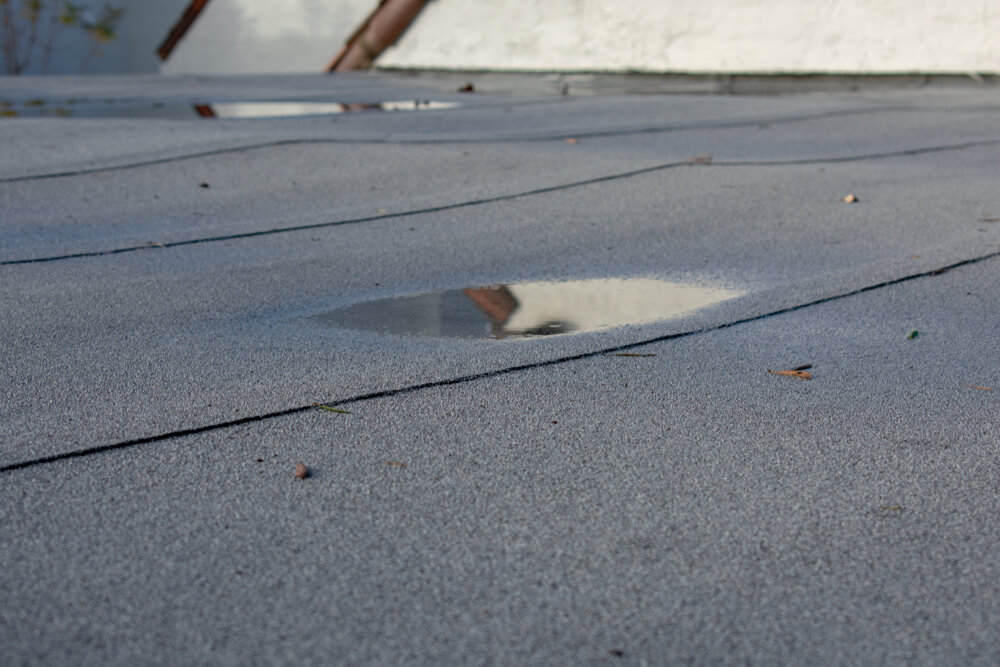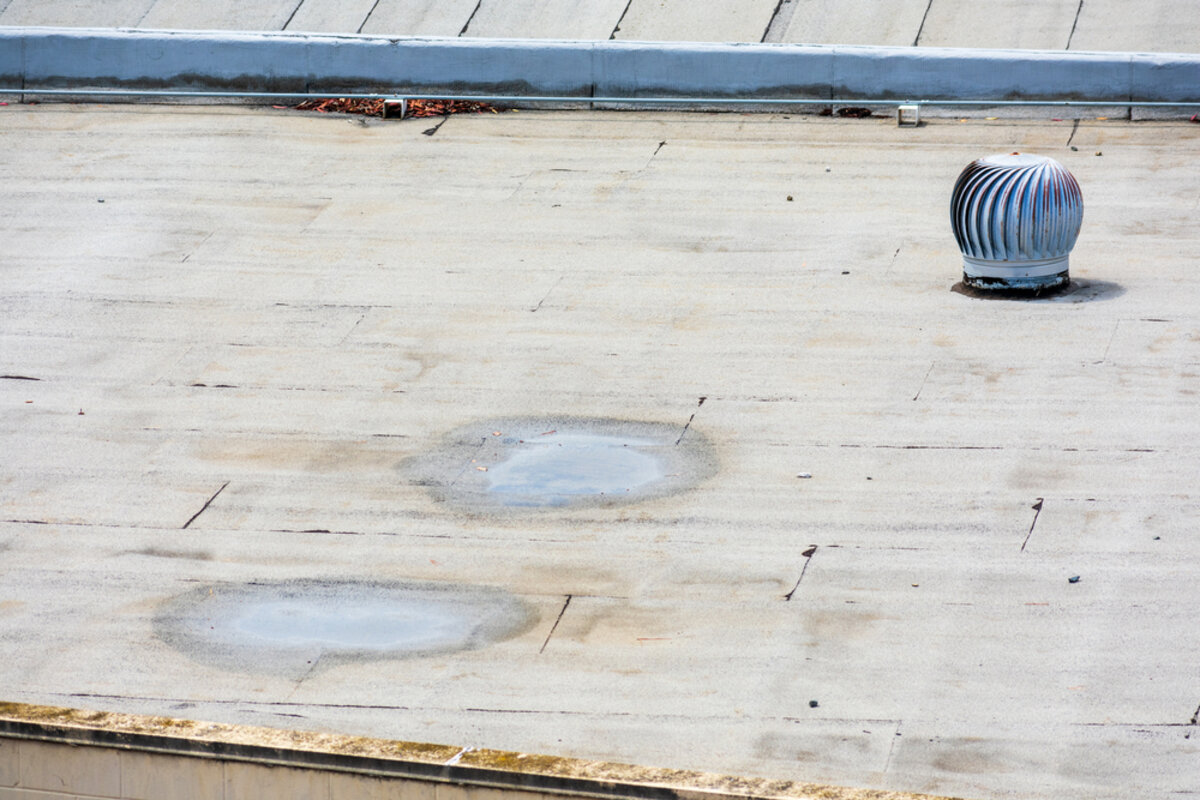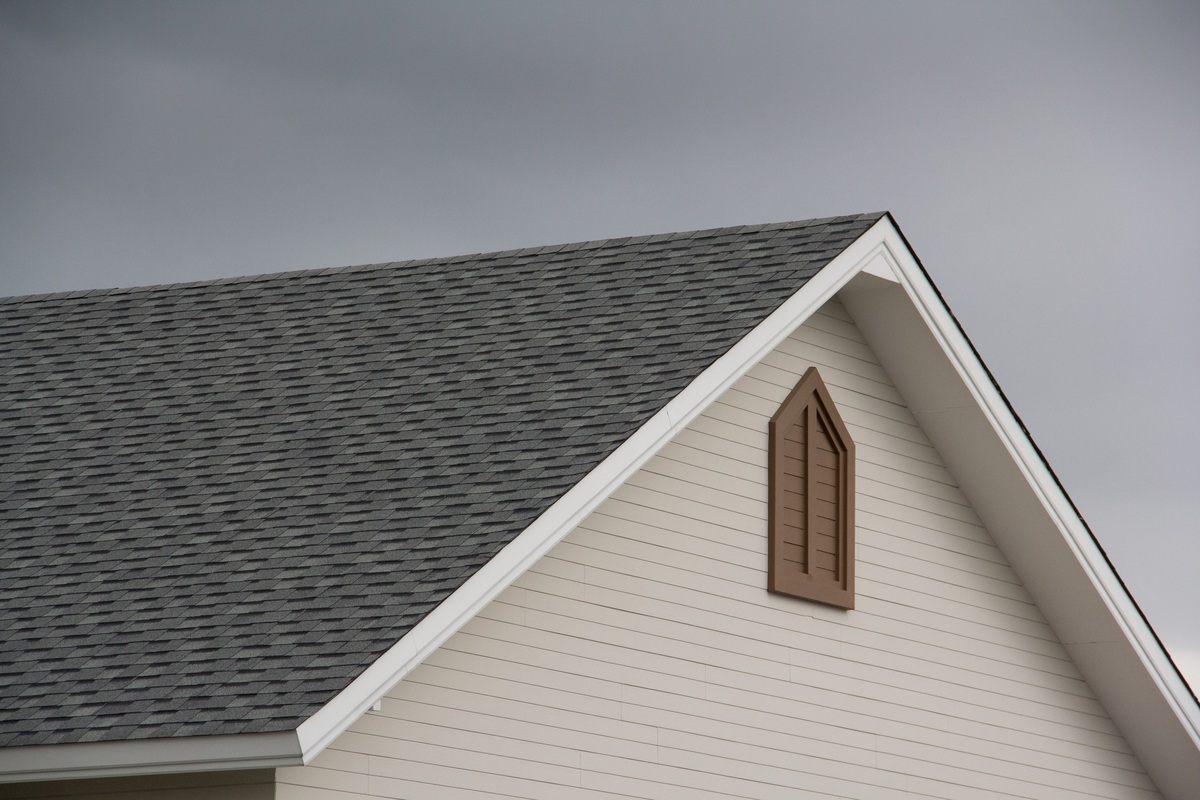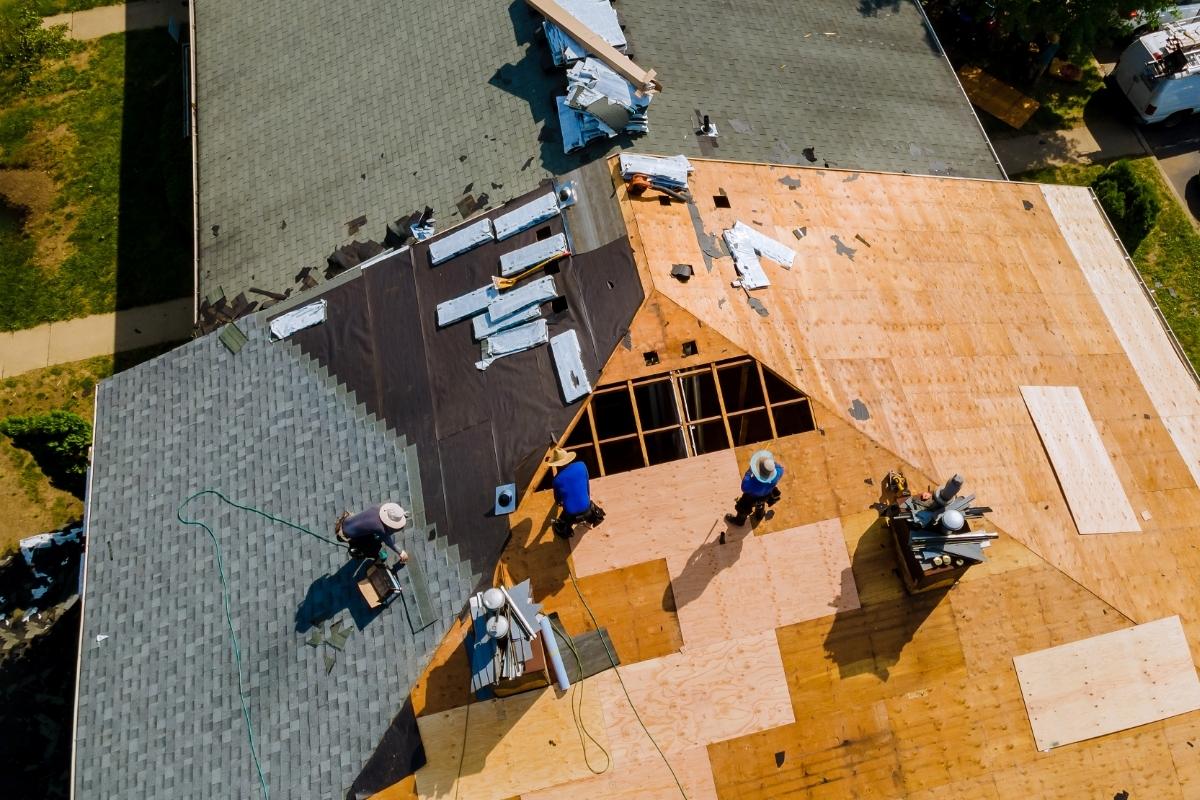Flat roofs are a popular choice for commercial buildings and modern homes, offering a sleek appearance and usable space. However, they come with a major drawback—water accumulation. When water sits on a flat roof for more than 48 hours after rainfall, it creates a condition known as ponding. This excess water may seem harmless at first, but over time, it can lead to structural damage, leaks, and costly repairs. Understanding the causes of ponding water and knowing how to prevent and fix it can save you thousands of dollars and extend the life of your roof.
Five Common Causes of Ponding Water on Flat Roofs
1. Poor Drainage System
A well-functioning drainage system is essential for flat roofs. If gutters, scuppers, or interior drains become clogged or improperly installed, water has nowhere to go. Over time, this leads to standing water that can weaken the roof membrane.
2. Insufficient Roof Slope
Flat roofs should have a slight slope—about 1/4 inch per foot—to allow water to drain properly. If the slope is inadequate or was not installed correctly, water will remain trapped in low spots.
3. Roof Settling or Structural Defects
Buildings naturally settle over time. This shifting can create depressions in the roof that hold water. Additionally, improper roof construction or aging materials can contribute to uneven areas where water collects.
4. Blocked or Faulty Scuppers
Scuppers are openings in the roof edge that direct water to a drainage system. If they become blocked by leaves, dirt, or debris, water cannot flow off the roof, leading to ponding.
5. Deteriorating Roofing Materials
Over time, roofing materials wear down due to UV exposure, extreme temperatures, and weather conditions. If the roofing membrane loses its integrity, water can seep into cracks, further worsening the problem.
Preventing Ponding Water on Flat Roofs
Ensure Proper Drainage Maintenance
Regular maintenance of drainage systems is one of the simplest and most effective ways to prevent standing water. Clearing gutters, downspouts, and scuppers at least twice a year will ensure that water flows freely off the roof.
Install Additional Drainage Solutions
For roofs that struggle with proper water flow, additional drains, scuppers, or tapered insulation can improve drainage. These enhancements help redirect water to designated areas, preventing pooling.
Inspect the Roof Regularly
Routine inspections help identify small issues before they turn into major problems. Checking for dips, soft spots, or clogged drains after heavy rain can help detect ponding water early.
Improve Roof Slope with Tapered Insulation
If a roof was built with an insufficient slope, installing tapered insulation can create a gradual incline. This allows water to move toward drains instead of collecting in low areas.
Reinforce Weak Roofing Areas
Applying additional roofing materials such as reinforced membranes, coatings, or waterproof sealants can help prevent water damage in vulnerable areas. These products provide an extra layer of protection against leaks and deterioration.
Best Fixes for Existing Ponding Water Problems
Roof Patching and Leveling
If low spots have formed, applying roof patching materials or self-leveling compounds can help eliminate water collection points. This method works well for minor dips but may not be sufficient for larger issues.
Installing a Secondary Drainage System
For roofs that frequently experience ponding, adding a secondary drain or siphon system can prevent excessive water buildup. This is especially useful for buildings in areas with heavy rainfall.
Roof Coating and Waterproofing
Applying a reflective or waterproof coating can help protect against water damage. Some coatings are designed to improve drainage and increase roof longevity by preventing UV and moisture-related wear.
Replacing Damaged Roofing Materials
If ponding water has already caused significant deterioration, replacing sections of the roof may be necessary. Upgrading to modern, more water-resistant materials can help prevent future problems.
Professional Roof Restructuring
In severe cases, a full roof restructuring may be required. This involves rebuilding the roof with an improved slope and drainage system to eliminate ponding water permanently.
Final Thoughts

Ponding water on flat roofs is more than just a minor inconvenience—it’s a serious issue that can compromise the integrity of a building. Regular maintenance, proper drainage, and timely repairs are key to preventing damage. If standing water is already a problem, implementing the right fixes can protect the structure and extend the lifespan of the roof. Addressing ponding water early on will save time, money, and potential structural headaches down the road. If you need professional assistance, contact DryTech Exteriors today.




